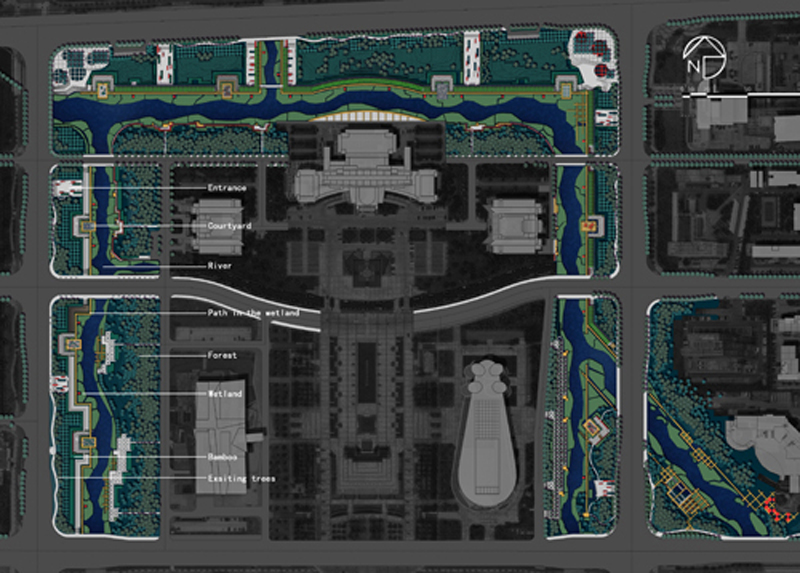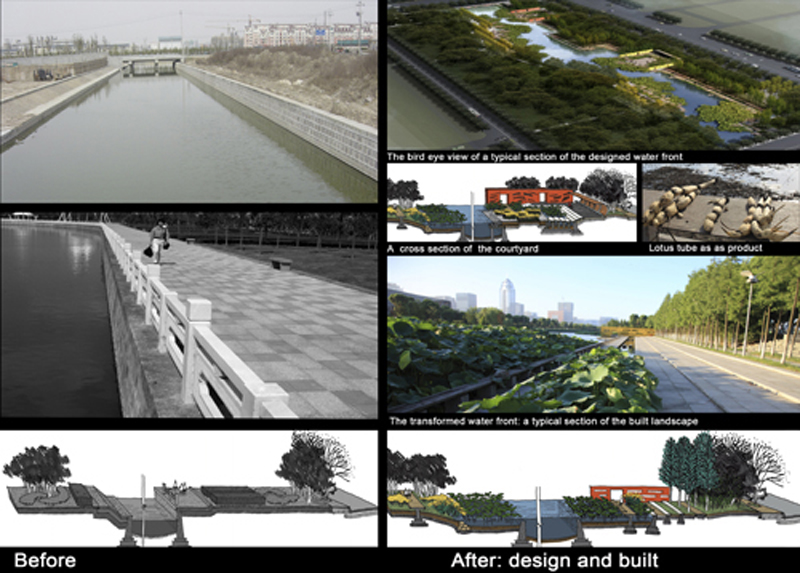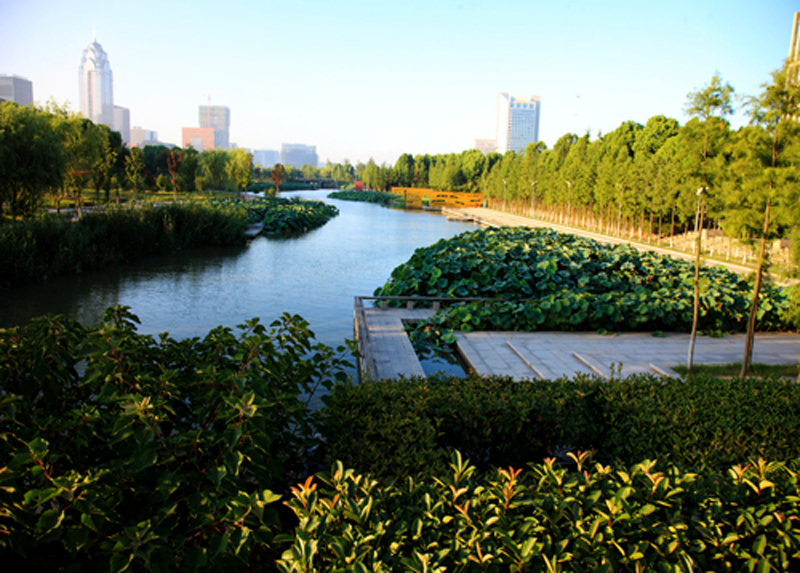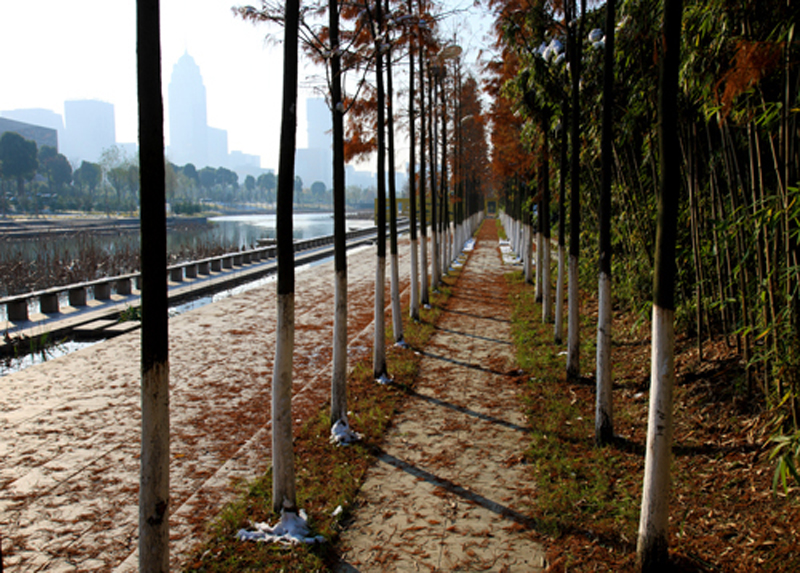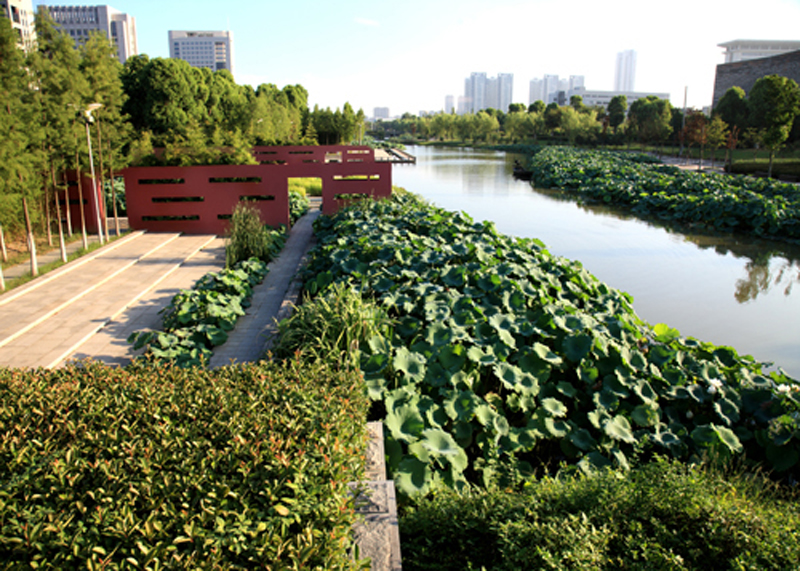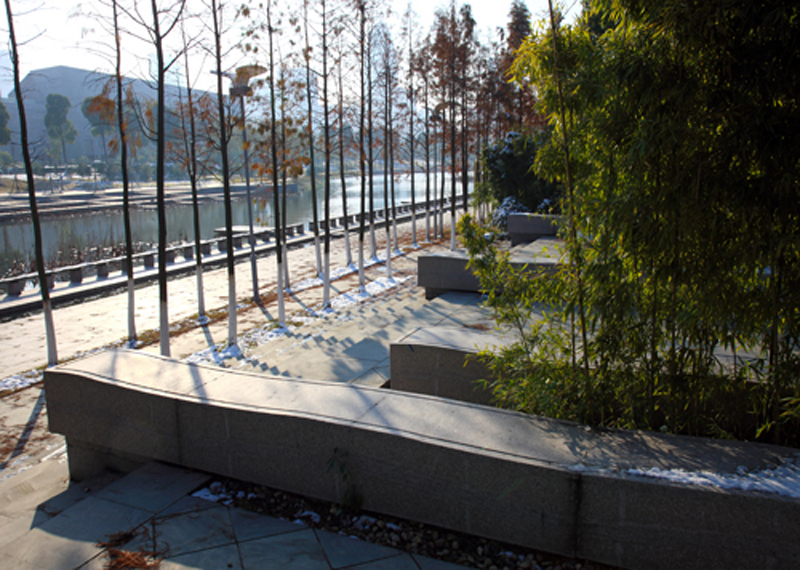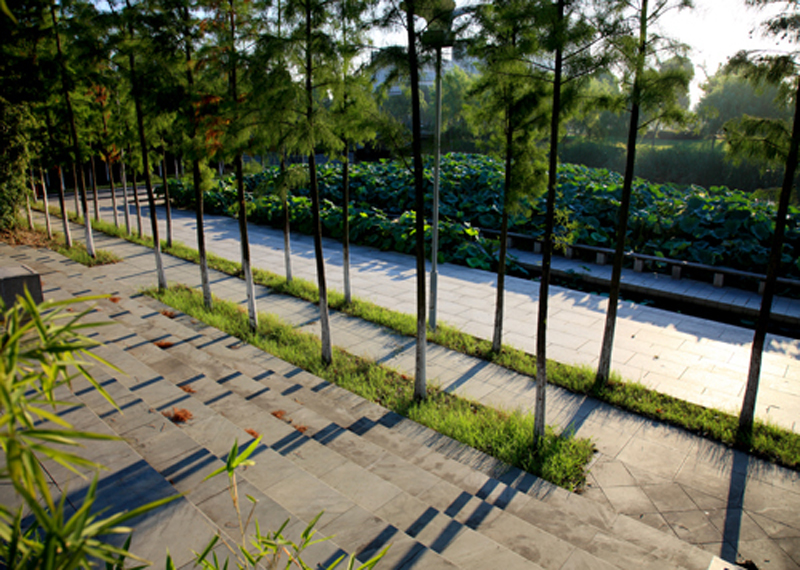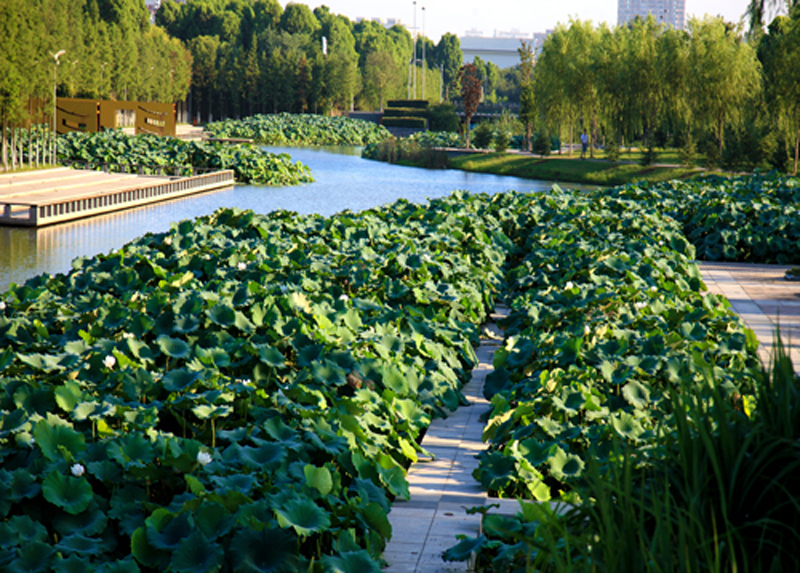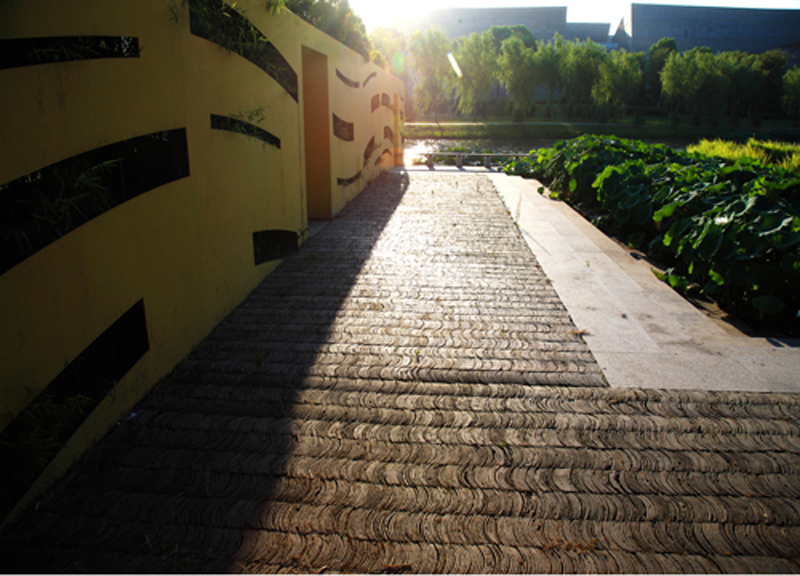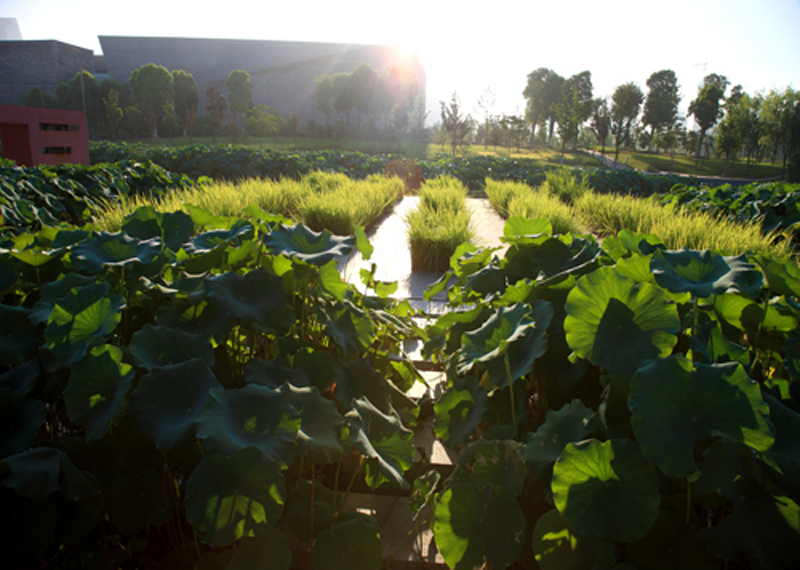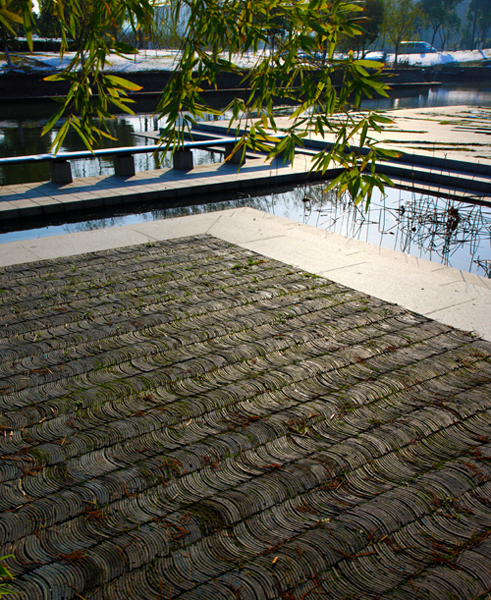Ningbo Yinzhou Central River Transformation
Project Information
- Project Location:
- China Ningbo, Zhejiang
- Design Time:
- 2006
- Build Time:
- 2010
Project Profile
1. Project Statement
River channelization with concrete and other hard materials is an ubiquitous phenomenon in urbanized areas. The Yingzhou Central River Transformation project showcases an alternative solution to urbanized waterfronts, addressing the challenges of minimum available land and flood control. It successfully transformed a channelized, concrete, rigid and lifeless river into an eco-friendly, aesthetically pleasant and productive landscape, harmonizing the relationship between nature and city.
The project is located in the center of the newly developed dense urban Yingzhou District of Ningbo City, in Zhejiang Province, China. The regional landscape is characterized by a network of watercourses that have evolved through hundreds of years for both irrigation and drainage in the eastern coastal area, which is influenced by the monsoon climate. In the past, the water system functioned as a holistic ecosystem that provides multiple eco-system services including water mediation, biological production, life support for biodiversity, as well as recreational services, cultural meaning and aesthetic pleasure. During the course of the region’s rapid urbanization process, these water features have been largely filled or channelized using concrete, resulted in rigid and lifeless concrete ditches which only function for drainage. At the same time, other ecosystems services have been ignored completely. By transforming the a former channelized river into an eco-friendly, productive and pleasant water feature, this project showcases the recovery of the water courses as living ecosystems with the capacity of providing multiple ecosystem services.
2. Objective and Challenge
First of all is the issue of limited land use. The central district occupies an area of one square kilometer and its surrounding rivers had all been channelized. The waterfront space is only 50-80 meters wide between the street and the water line. Along the water’s edge is a bend of 10-20 meters of hard surface pavement rendered in concrete and granite. Beyond this narrow bend is a green strip which had been planted with trees. Secondly is the problem of flood control. The flood control regulation requires that the drainage capacity of the channel shall not be reduced. Thirdly, budget is limited and no massive earthwork is possible.
3. Design Strategy
The design solutions include the following key principles:
(1) Keep the newly planted trees on site as much as possible, so that the cost of tree planting can be reduced;
(2) Remove the upper part of the concrete wall, but keep base of the existing wall to keep the earthen bank from being eroded;
(3) Reduce the elevation of the riverbank so that a wetland zone can be created for wetland vegetation to grow. Productive lotus flowers are grown and lotus roots can be harvested in the fall.
(4) A boardwalk is installed in the middle of the wetland surrounded with lotus flowers. A bench is used as both fences and seats.
(5) A series of semi-enclosed courtyards, sized 30x30 meters are allocated at intervals of 150 meters. Inspired by the vernacular courtyard typology of the local villages, local materials of tile and granite slates are used for paving. A wood shelter is nestled amongst the background trees for people to rest. Native grasses are grown inside the courtyard. Double steel panels, filled with bamboo in-between frame the courtyard. In this way, a contemporary new-vernacular experience is created.

